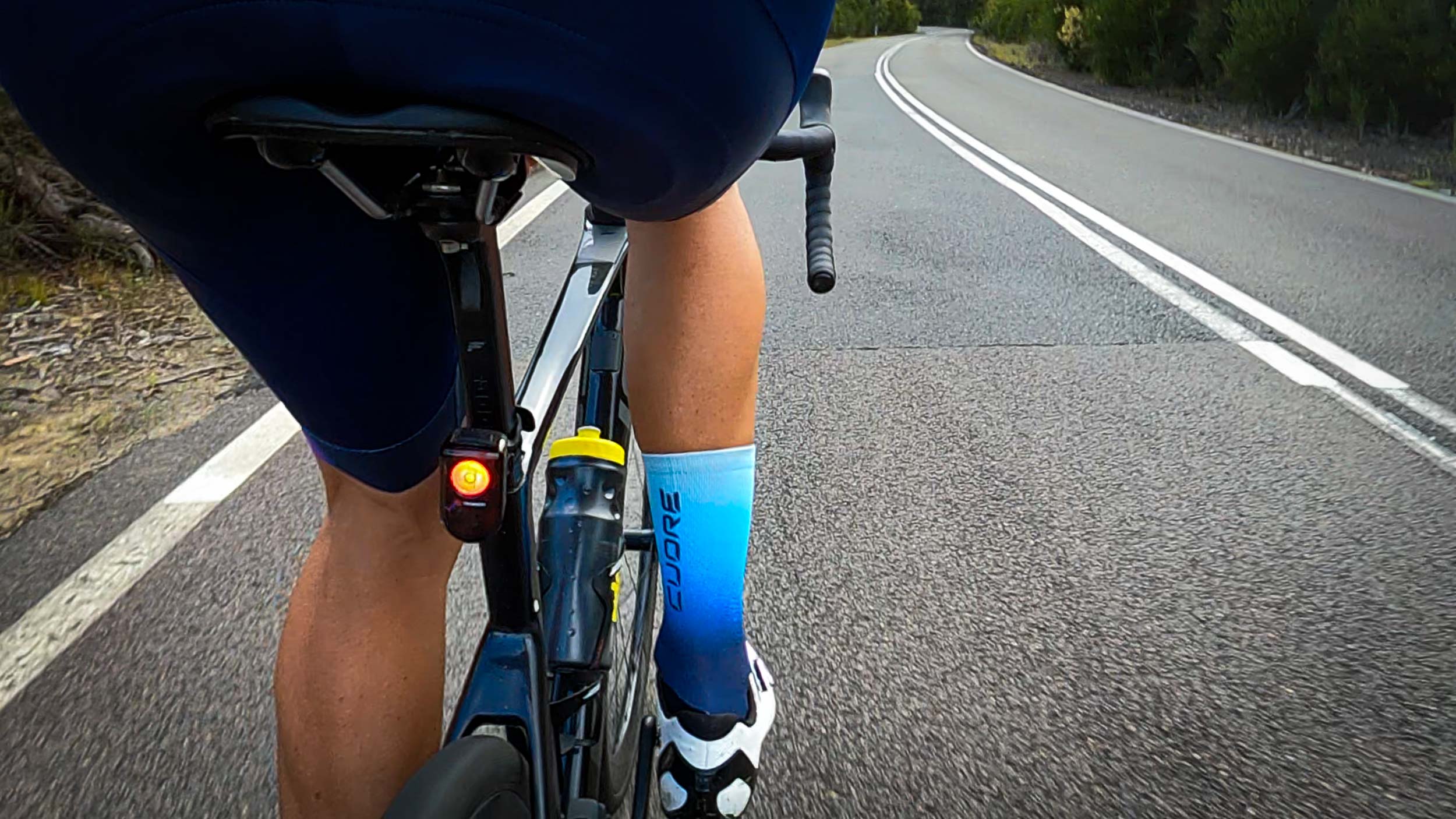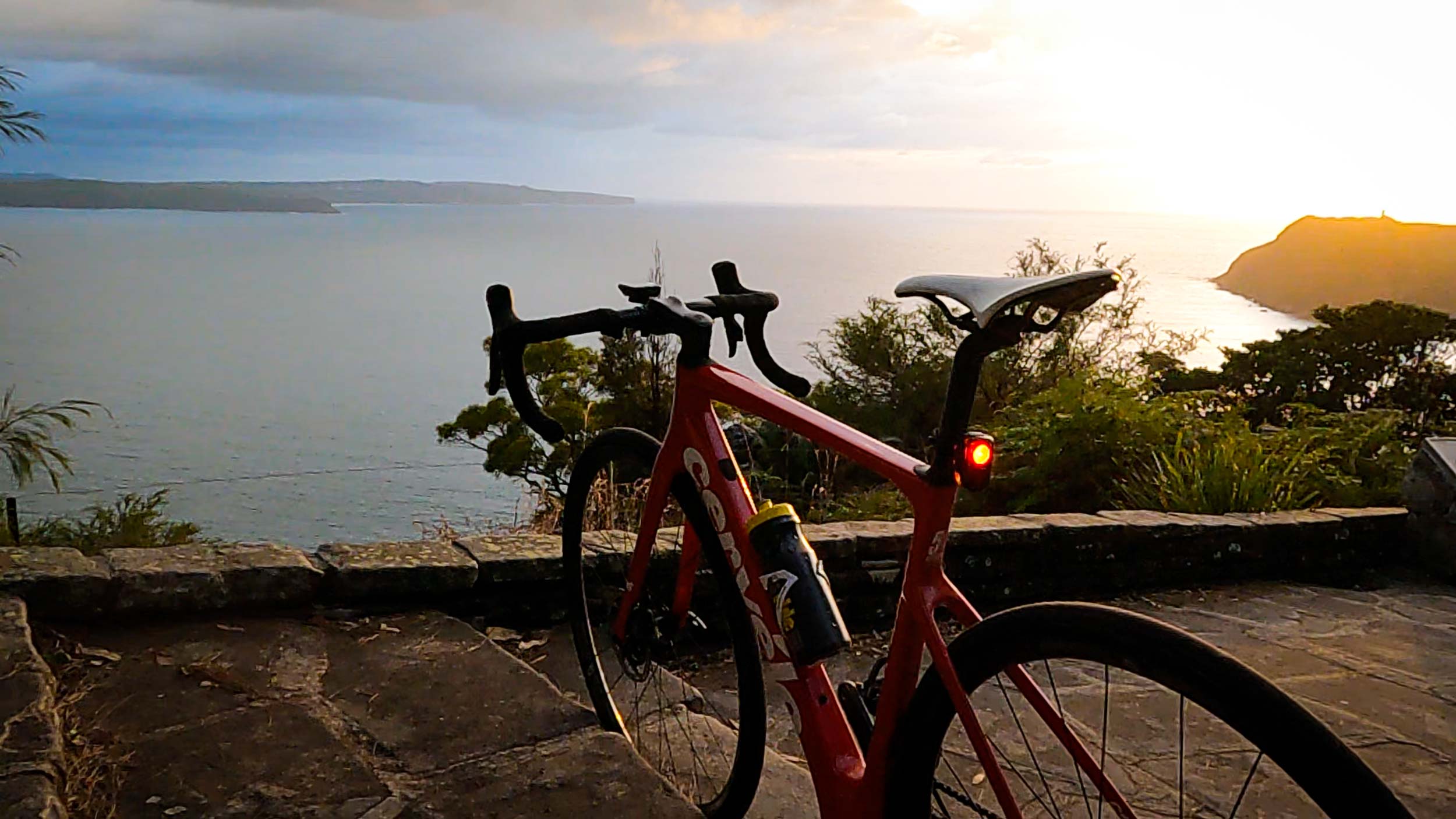It only takes one ride in the city on a dark morning to realise that the cycling lighting market is very bright in 2021. There’s a lot of lumens on bikes, but are they being pointed in the best possible direction?
– Click the link below to watch a video about cycling lighting. –
If you’ve ridden in the dark recently chances are you’ve seen a multitude of cycling lights, either red up ahead, or a white beam coming at you. You’ve probably seen a vast array of different settings: a constant light, flashing, or even strobing.
Alas, you may also have copped a bright light right in the eye and been briefly blinded.
Bike lights have never been as good as they are in 2021. Easily rechargeable, brighter than you ever could have imagined, easy to fit to the handlebars or seat post or helmet, they are thankfully more prominent than ever before.
There is, quite frankly, no excuse to ride in the dark without lights. But there is a need to be mindful of where the beam is directed and what setting you select at what time of the day or in what environment.

Yesterday, on an early ride in Sydney, I found myself talking about lights. Bright, flashing lights in particular. And the reason was simple: it can be difficult to see properly if a flash of red or white gets you in the eye.
As one viewer of a recent video uploaded to RIDE Media’s YouTube channel explained, it can even cause bigger issues.
“I’m epileptic,” wrote Ross Pearson in the comments section of a video about cycling lighting. “When oncoming riders have their (front strobe) lights adjusted to an inappropriate angle (ie. at face height of other riders), I have to look down until they pass, otherwise I’ll have a neuro-shitstorm go off in my brain. Not a good look!”
No one wants to have to go through a neuro-shitstorm while they’re otherwise merrily enjoying a bit of exercise on the bike.
And so, I thought it was a good time to consider Ross’ comment, as well as some other observations and considerations about cycling lighting etiquette in the modern world.

Some considerations (not rules)
Lights on bikes serve a few purposes, mainly to help see and be seen. We want to illuminate the road ahead of us, so we know where we’re riding and also to see potential hazards. And we want to illuminate ourselves so that other road / trail users know we’re there, and ideally use that knowledge to avoid colliding with us.
Surely, we all agree on these points. Be safe, be seen… right?
There is such fantastic tech these days that we can easily light up the road or trail to such an extent that we can detect that shard of glass that ought to be avoided, or a pothole that could cause a problem. Etcetera.
It’s also possible to manage the beams of light from a remote that you can position on your handlebars. (Let’s not call it a ‘cockpit’, that’s for aircraft, not bicycles.)
There are companies doing great things with lighting and this article is not at all a review of any product in particular (but I would very much like to know what brands provide you with your bike lighting, so please send an email or leave a comment).
Instead, I want to keep the conversation about how to manage the tech that’s at our disposal.

Think about yourself… and others
The best suggestion is simply to ride with lights that suit your purposes and do so while thinking about others who are in your vicinity. Simple suggestions flow in quickly when you put it to a forum and here are a few simple points to consider:
- Point your front light ahead of your bike but towards the road, allowing you to see potential problems and giving yourself sufficient time to react.
- Be sure that your rear light is bright enough (and positioned correctly) to ensure others can see you.
- Use bike lights all the time: night or day… it does increase your presence on the road (or trail).
- Be mindful about how bright your lights are and avoid aiming them in the line-of-sight of fellow road (or trail) users.
Read through the comments on the YouTube video and/or the post on RIDE Media’s FB page. You may find a few other tips from viewers / readers.
“A very powerful front light has its place,” writes Steve Knope, “which isn’t for general road riding.
“When doing local hill reps in the dark of the morning I use high beam (~1,300 lumens) pointing forwards for the descents because it’s important see skippies at descending speeds. And there’s virtually no oncoming traffic at that time.
“As soon as the descent is over, it gets flicked back to 500 [lumens] or whatever the ‘mid-low’ setting is and bumped downwards a bit.”
In other words, adjust to your needs and amend the settings accordingly when there are others around.
It’s just one example (and there are many more) and it’s not just me having a whinge either. There is a lot of work going on at government level around the world to ensure a safe ‘standard’ for bike lighting is established. And I’ll follow up on this post with a column by Peter Bourke of Bicycle Industries Australia who is working closely with legislators and bicycle user groups alike to establish some ground rules for this exact topic.
Do we need more regulations?
Exactly what becomes of bike lights in the coming years is going to be part of a greater discussion about cycling in the modern world. In Germany, for example, the government has imposed new standards for bike lights so that a limit is set on how bright you can get.
Although there is tech on offer to virtually turn night into day, it doesn’t necessarily mean this is the best, most practical solution.
What’s important is to find a happy medium that allows us to see and be seen… while not creating an on-road disco that becomes even more confusing than the network around out towns and cities already are.
The German solution is being managed as part of road regulations. The Bicycle Industries Australia process is ongoing and Bourke is on a quest to get as much feedback as possible from bike riders and motorists alike, to ensure that there are ground rules based on logic – and, ideally, without the need for legislation.
What is apparent, however, is that the improvements in cycling lighting are immense and ultimately beneficial for everyone who rides. What is also obvious is that the direction of the lighting must be managed correctly or else it’ll do more harm than good.
* * * * *
Please feel free to contribute to this discussion. I’m interested to know how things are where you ride and what you think is an appropriate level of lighting which suits you and those around you.
– By Rob Arnold


